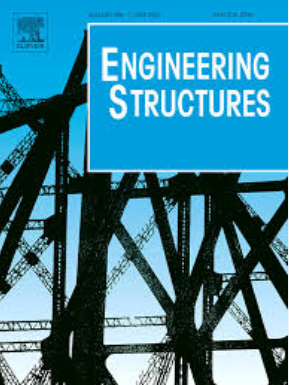Economic impact of performance-based fire design of composite steel frame structures
IF 5.6
1区 工程技术
Q1 ENGINEERING, CIVIL
引用次数: 0
Abstract
Adopting a performance-based design approach can often result in superior technical solutions for structural fire safety, for example increasing structural resilience, but the economic implications remain poorly understood. Prescriptive fire designs are still the default method, despite advances in structural fire engineering showing the potential to deliver higher levels of performance and/or more efficient designs. Here we evaluate the lifetime costs of various fire designs for composite steel-concrete structures considering investments, co-benefits, and averted fire-induced losses. The proposed method integrates construction and maintenance costs, potential direct and indirect damage losses from fire incidents, co-benefits such as compressed construction schedule, and lifetime CO2 emissions. We study multi-story residential buildings with four variations of structural fire designs for the composite floor systems. The performance-based design, which leverages membrane action in the floor, is generally more cost-effective than the prescriptive design, owing to its lower probability of integrity failure and lower amount of fire protection material. The superiority of the performance-based design becomes more pronounced as material and labor costs increase, and as indirect losses from building closures grow. The fire load influences the relative cost-effectiveness of the designs through the expected fire severity, so optimum designs can be identified as a function of statistical fire load models based on occupancy. These findings can support decision-making and code advancements by providing economic data that complement previous technical studies on the merits of the performance-based design approach for structural fire design.
组合钢框架结构防火性能设计的经济影响
采用基于性能的设计方法通常可以为结构防火安全提供卓越的技术解决方案,例如增加结构的弹性,但其经济含义仍然知之甚少。尽管结构防火工程的进步显示出提供更高性能水平和/或更高效设计的潜力,但规范性防火设计仍然是默认方法。在这里,我们考虑投资、共同利益和避免火灾造成的损失,评估各种钢-混凝土组合结构防火设计的生命周期成本。所提出的方法综合了施工和维护成本、火灾事故造成的潜在直接和间接损失、压缩施工进度等共同效益,以及生命周期内的二氧化碳排放。我们研究了多层住宅的复合楼板系统的四种结构防火设计。基于性能的设计,利用地板中的膜的作用,通常比规定的设计更具成本效益,因为它的完整性破坏的可能性更低,防火材料的用量也更少。随着材料和人工成本的增加,以及建筑封闭造成的间接损失的增加,基于性能的设计的优势变得更加明显。火灾负荷通过预期火灾严重程度影响设计的相对成本效益,因此最佳设计可以确定为基于占用率的统计火灾负荷模型的函数。这些发现可以通过提供经济数据来补充先前关于基于性能的结构防火设计方法优点的技术研究,从而支持决策和规范的进步。
本文章由计算机程序翻译,如有差异,请以英文原文为准。
求助全文
约1分钟内获得全文
求助全文
来源期刊

Engineering Structures
工程技术-工程:土木
CiteScore
10.20
自引率
14.50%
发文量
1385
审稿时长
67 days
期刊介绍:
Engineering Structures provides a forum for a broad blend of scientific and technical papers to reflect the evolving needs of the structural engineering and structural mechanics communities. Particularly welcome are contributions dealing with applications of structural engineering and mechanics principles in all areas of technology. The journal aspires to a broad and integrated coverage of the effects of dynamic loadings and of the modelling techniques whereby the structural response to these loadings may be computed.
The scope of Engineering Structures encompasses, but is not restricted to, the following areas: infrastructure engineering; earthquake engineering; structure-fluid-soil interaction; wind engineering; fire engineering; blast engineering; structural reliability/stability; life assessment/integrity; structural health monitoring; multi-hazard engineering; structural dynamics; optimization; expert systems; experimental modelling; performance-based design; multiscale analysis; value engineering.
Topics of interest include: tall buildings; innovative structures; environmentally responsive structures; bridges; stadiums; commercial and public buildings; transmission towers; television and telecommunication masts; foldable structures; cooling towers; plates and shells; suspension structures; protective structures; smart structures; nuclear reactors; dams; pressure vessels; pipelines; tunnels.
Engineering Structures also publishes review articles, short communications and discussions, book reviews, and a diary on international events related to any aspect of structural engineering.
 求助内容:
求助内容: 应助结果提醒方式:
应助结果提醒方式:


